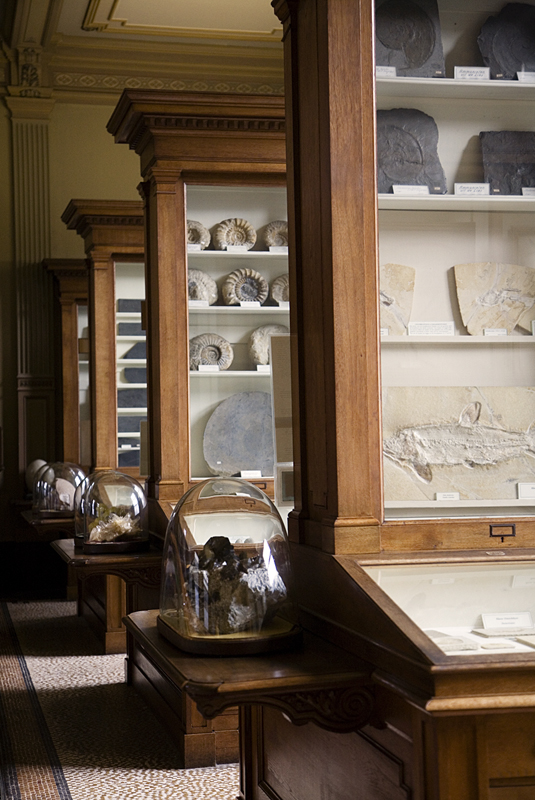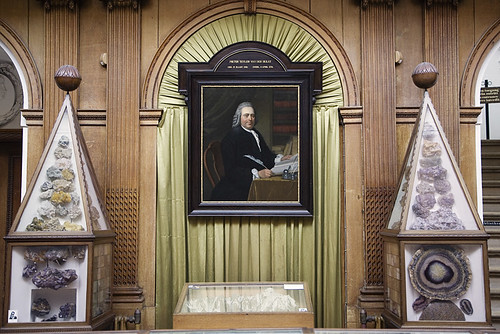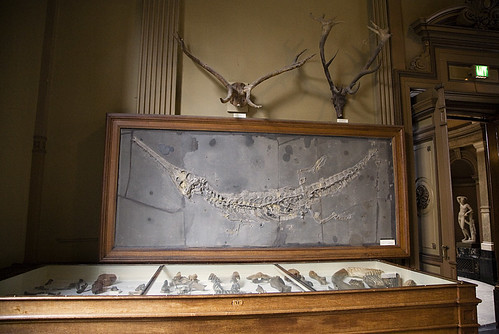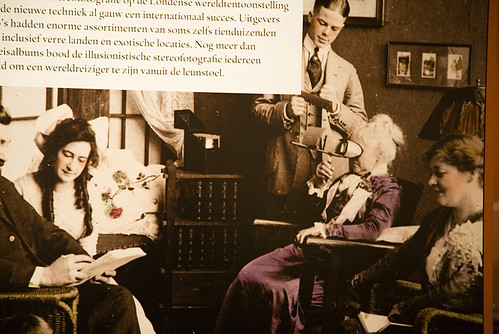




While in The Netherlands for a recent conference, I made a special trip with my friend Eric to Teylers Museum in Haarlem, a small town on the outskirts of Amsterdam.
Virtually unchanged since it was opened to the public in 1784, Teylers Museum is a remarkable, nearly untouched early collection both in content and in its archaic Wunderkammer-esque display. The museum presents, with palpable joie de vivre, a series of wonders ancient and modern as seen through the eyes of the 18th century--naturalia and artificialia, fossils and telescopes, optical toys and comparative telegraph cables, automata and minerals, models and bird eggs, paintings and scientific glassware--all housed beneath lofty sculpted and glass-vaulted ceilings, and presented in handsome wood-and-glass cases or ancient bell jars. Later 19th century additions, such as The Kaiser Panorama--an enormous, automated stereoscopic viewer with multiple viewers and rotating slides (which still works!)--and the potted-palm dotted and salon-hung picture gallery only heighten the feeling of stepping back in time. The museum also boasts an excellent shop, featuring an assortment of well-illustrated museum publications, some produced in conjunction with the wonderful Museum Dr. Guislain (with whom they seem to have a sort of partnership).
Here is some historical information about the museum, edited down from its Wikipedia entry:
The museum was once the home and collection of Pieter Teyler van der Hulst (1702–1778), a wealthy cloth merchant and Amsterdam banker of Scottish descent, who bequeathed his fortune for the advancement of art and science. Teylers Museum displays an eclectic collection of fossils (among which the first ever discovered, if not recognised, of Archaeopteryx), minerals, scientific instruments, medals, coins, and paintings. It is most famous for its extensive collection of old master's prints and drawings, including several works by Michelangelo and Rembrandt. The various objects reflect the interests of 18th century wealthy men like Pieter Teyler who kept 'rariteiten kabinetten' or curiosity cabinets...If you are ever in the Amsterdam area, I highly recommend making a special trip to this often-overlooked gem. You can visit the museum website here. To visit the online museum shop, click here. To visit the full set of images (and to read more about them!) click here. And to view the Wikipedia entry for the museum, click here.
The history of the Teyler's collection is almost as interesting as the collection itself. As curiosity cabinets fell out of fashion, the museum was granted objects from former summer estates in the Haarlem area. For example, many of the fossils come from a collection of one of the former owners of Groenendaal. Many of the medals and coins come from the former Johan Enschede mint, which was just around the corner.
In the 19th century, the museum was expanded with two Painting Galleries. The Teyler Museum contains of a collection of more than 10,000 master drawings and some 25,000 prints.


3 comments:
thanks
Herman Voogd
teylers museum
You're welcome, Herman. Please keep me apprised of any new information about the museum, upcoming exhibitions, etc. Wonderful museum you've got; a real treasure!
Joanna
Morbid Anatomy
I am dutch myself, and Teylers is one of my favorite museums.
BTW in Holland, Haarlem is not considered a small town ;)
Post a Comment